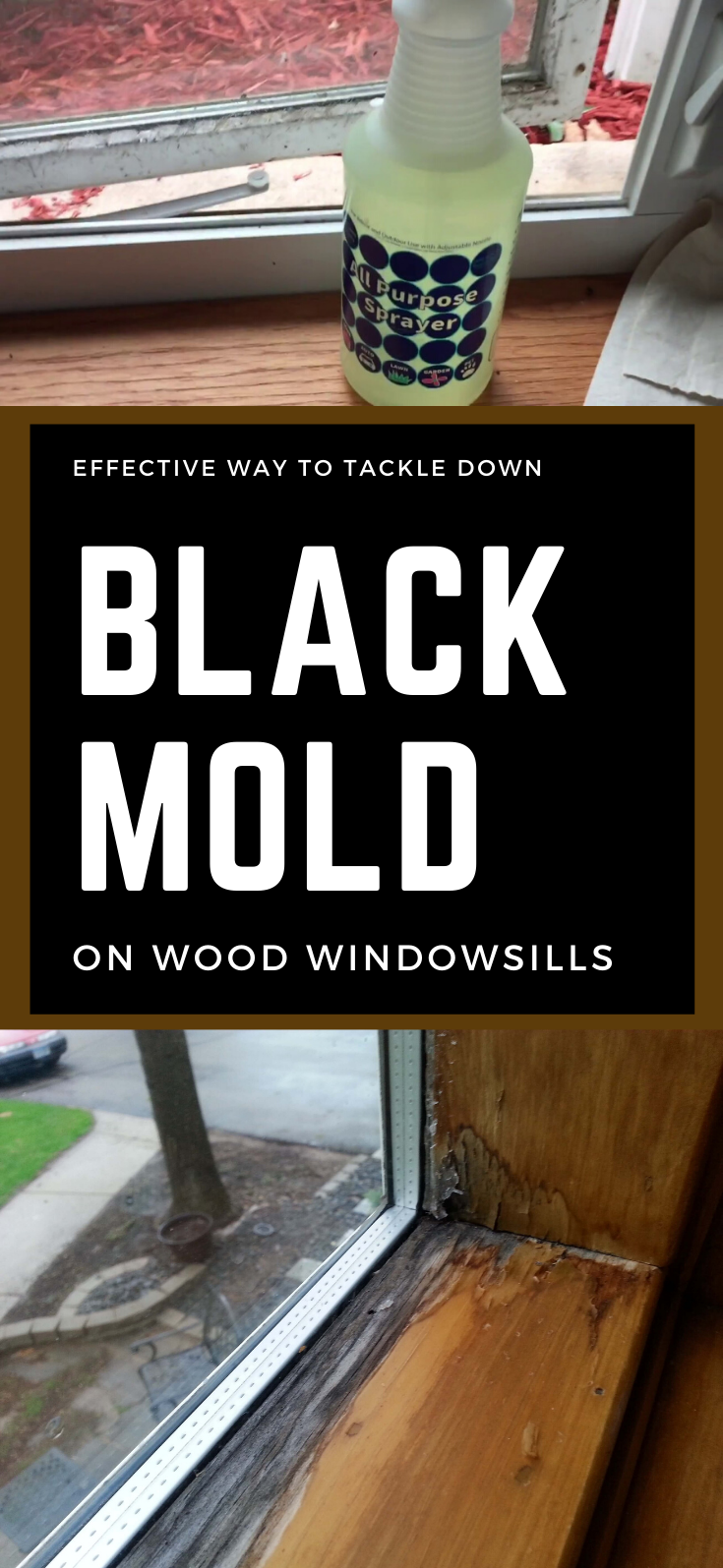It’s well-known the reason of black mold appearance, but what causes its growth on the window sill? Well, the exact same reason: moisture! If outside moisture finds its way onto the sill, black mold will appear immediately unless you don’t dry the wood.
Most water vapors will not condense unless there is a cold surface and often this surface is the window – the water will start to condense when the surface temperature drops below 50 degrees F. The overall effect is that water condenses on the windows and wets the window sill, and the mold spores germinate on those surfaces. This is not a serious problem. Routine cleaning with soap and water will remove the mold, and when the outdoor temperatures warm up there will be less condensation and little or no mold growth on the window sills.
But, if you weren’t so lucky and black mold took over your wooden window sill, then you can use some safe and effective methods in tackling black mold down.
First method: Hydrogen Peroxide

Fill a spray bottle with 3% hydrogen peroxide. Spray the mold with hydrogen peroxide and let the peroxide sit for 10 to 15 minutes. The peroxide will begin to bubble. This reaction is normal when peroxide comes in contact with dirt and bacteria. Wipe the mold off the surface with a damp cloth. Repeat the process until you have removed all the mold. Well, at least some of it then continue with the second method.
Second Method: White Vinegar

Just mix 1 cup of vinegar with 1 cup of water in a bowl and soak a cloth in it. Wring out the cloth or shake the brush to remove excess liquid. Start scrubbing the window sill once more and be careful to wipe all the moldy area. Let the vinegar solution to act for 15 minutes. Soak another cloth in water, wring it and start scrubbing again to rinse the vinegar.
Tip: for hard-to-reach areas you can use a toothbrush to remove mold spores.
Items and ingredients Needed:
- 1 bottle of hydrogen peroxide
- 1 cup of tap water
- 1 cup of white vinegar
- spray bottle
- 2 cloths
![]()










































